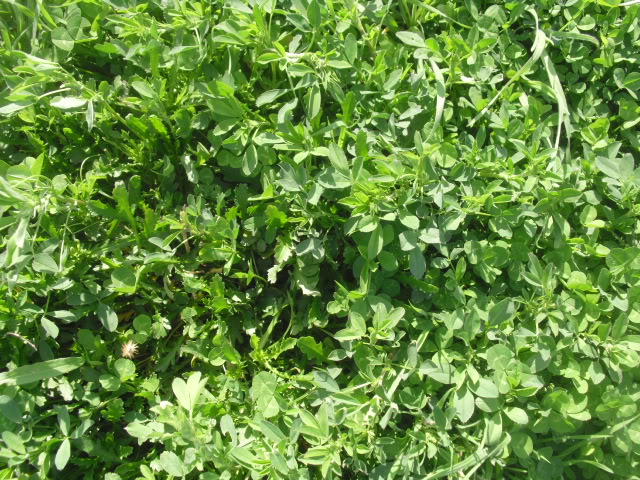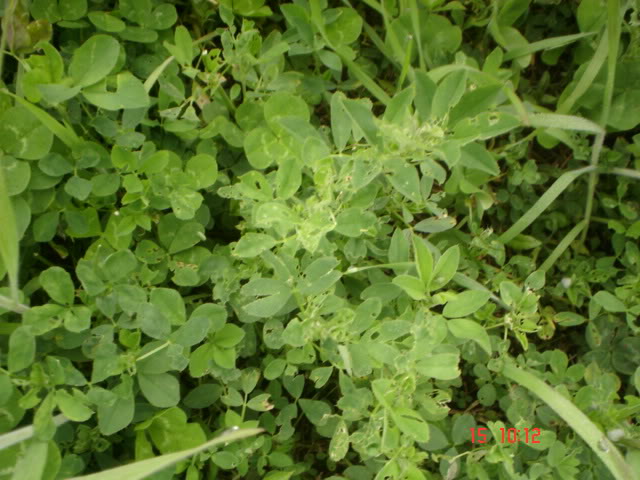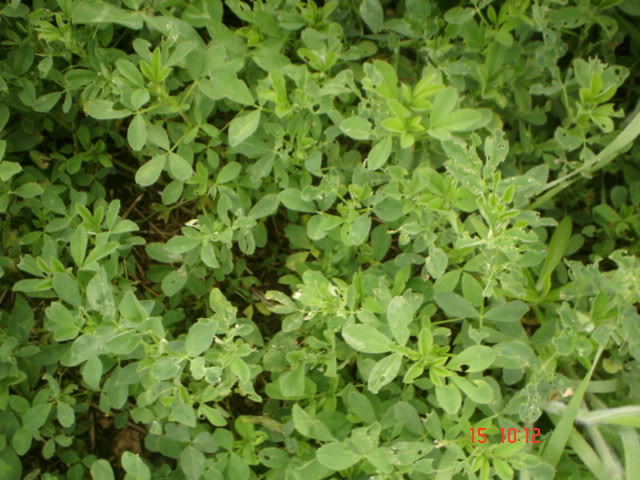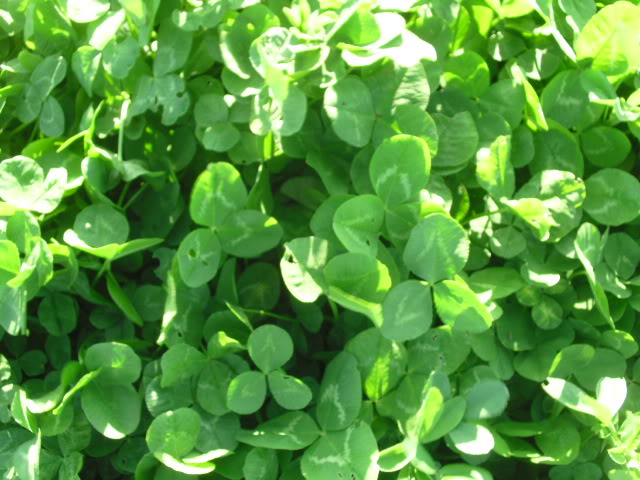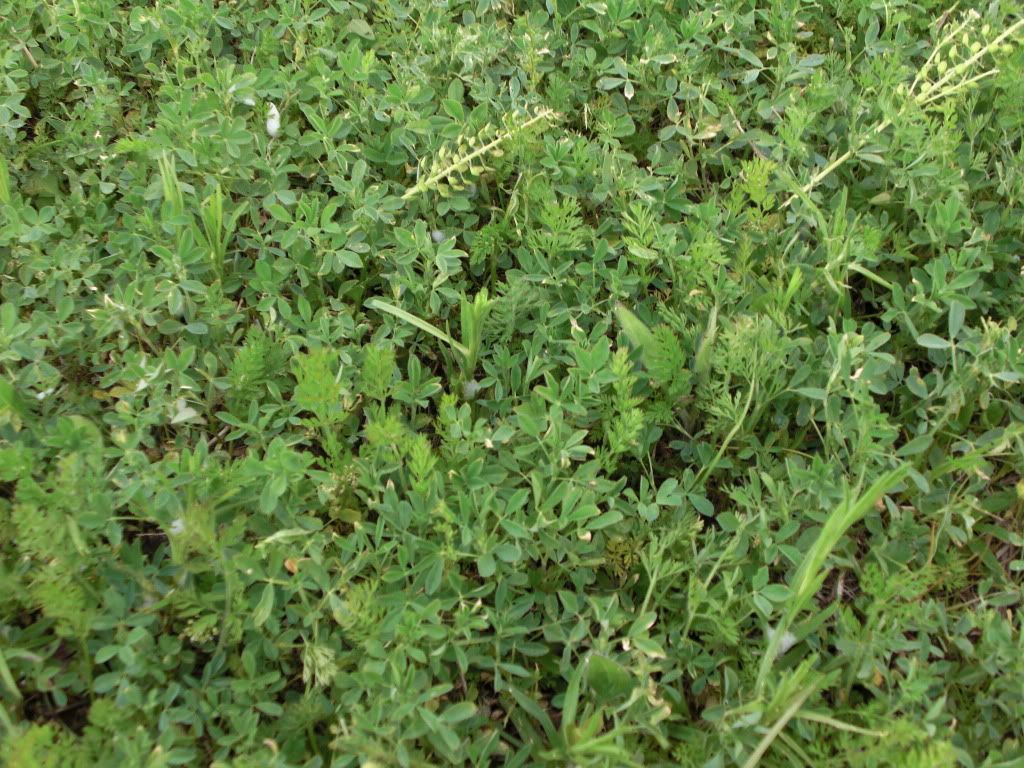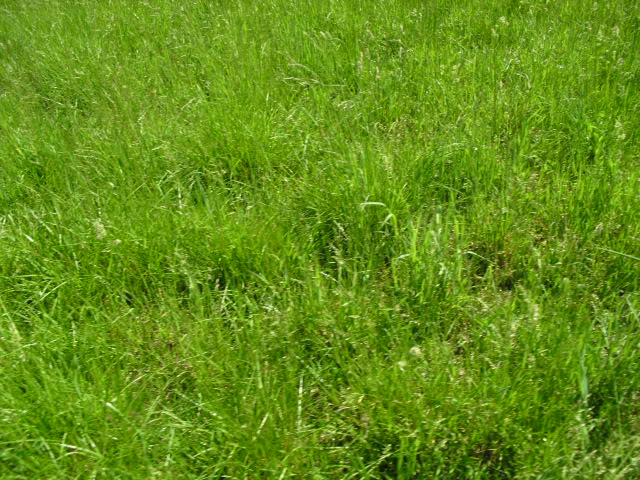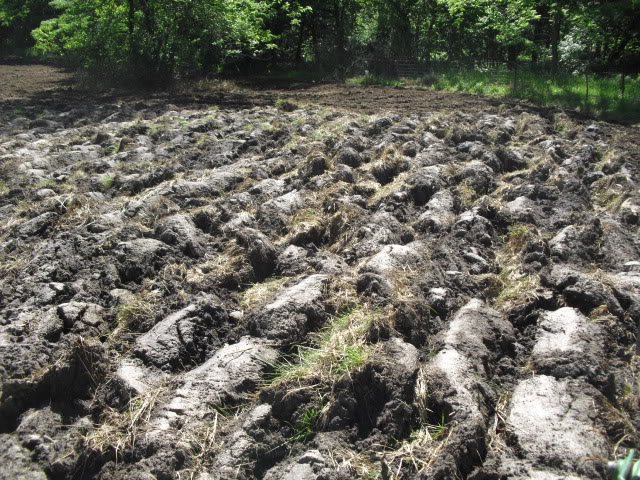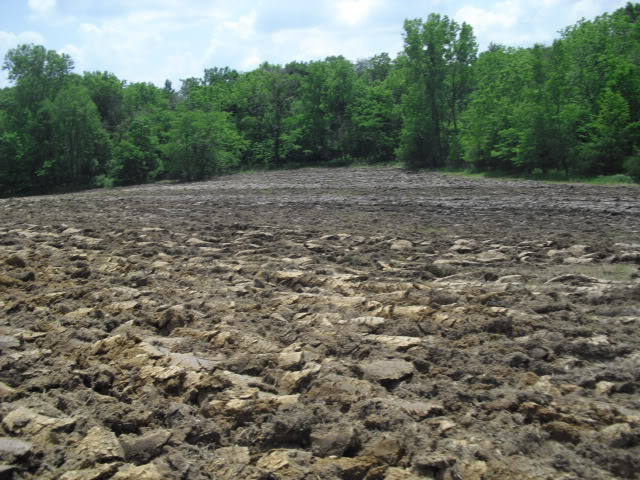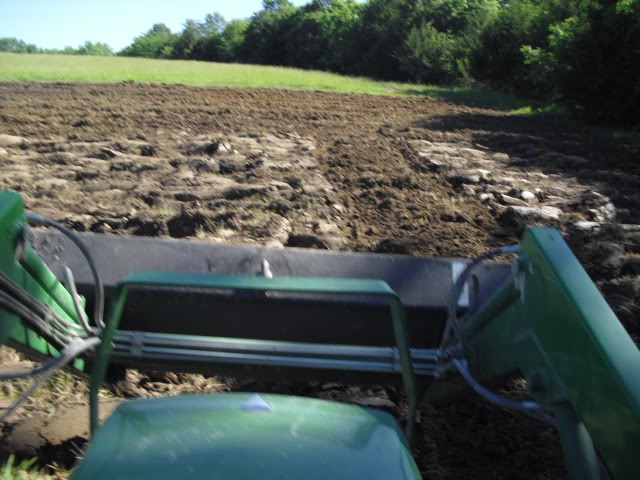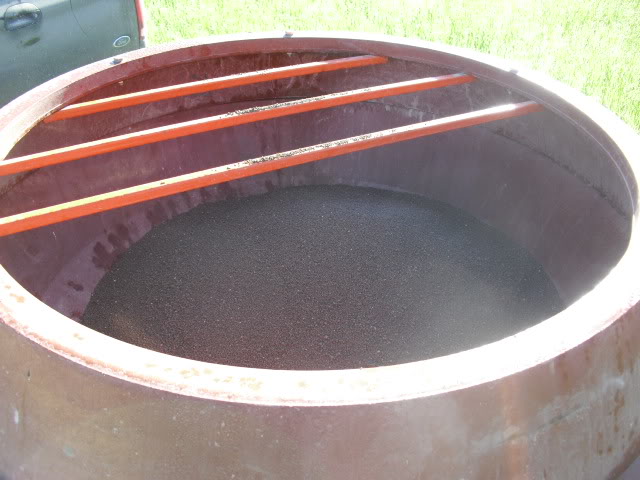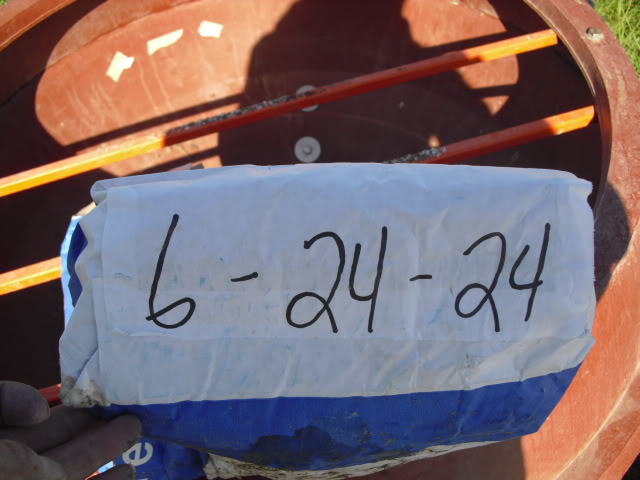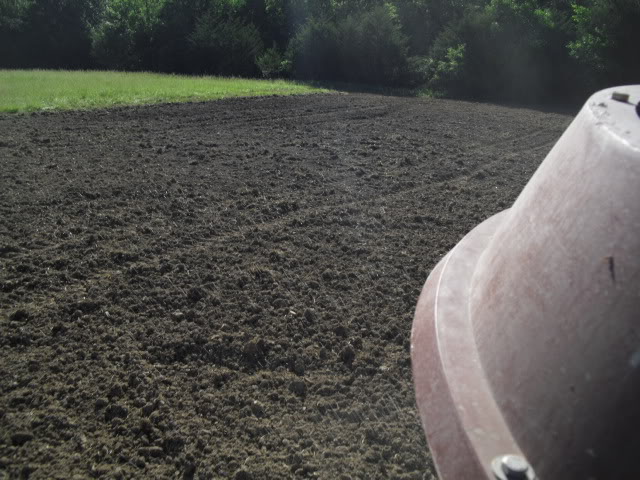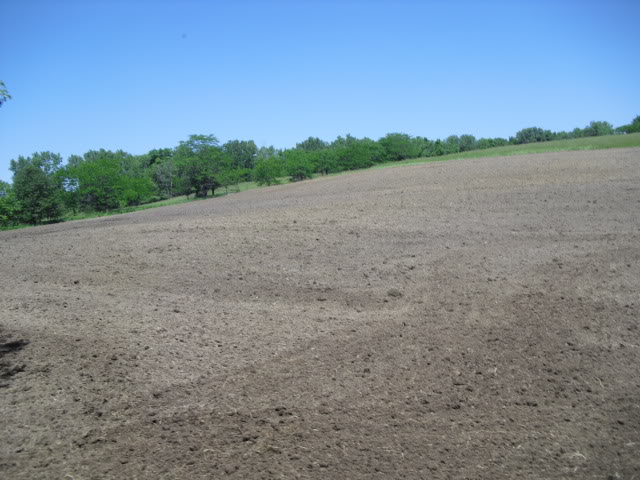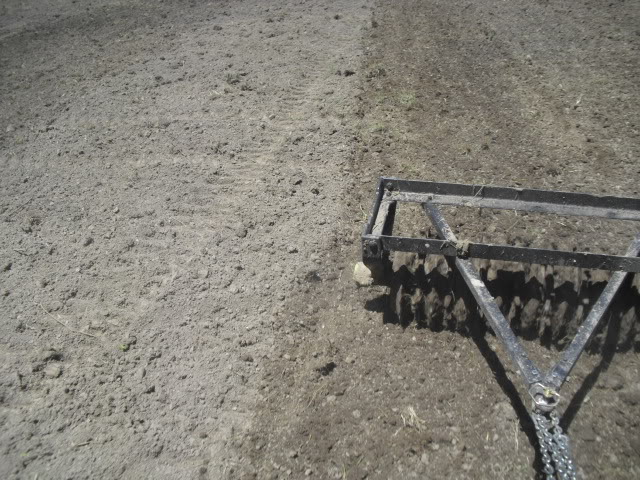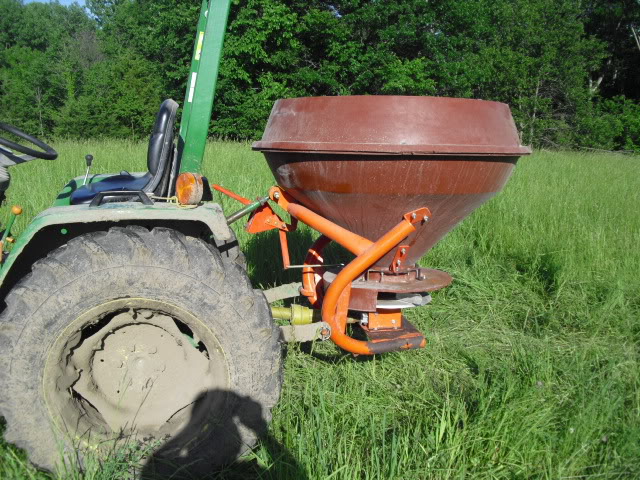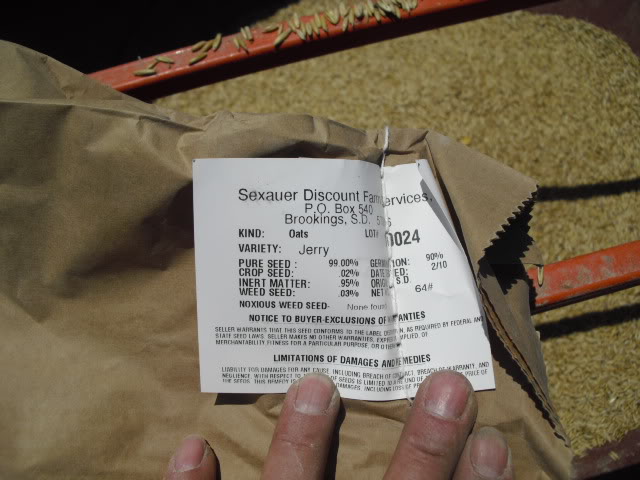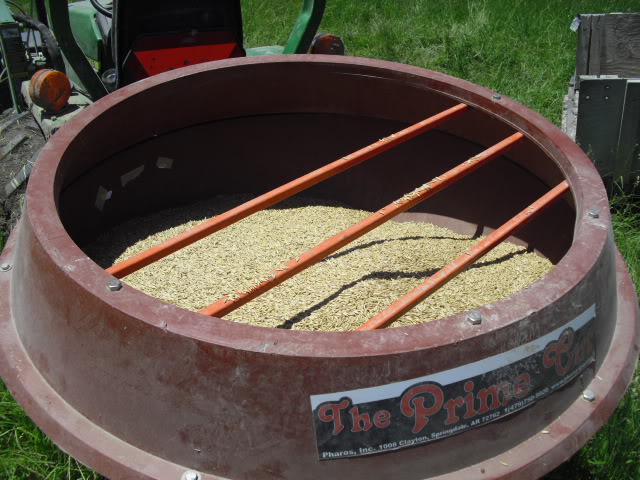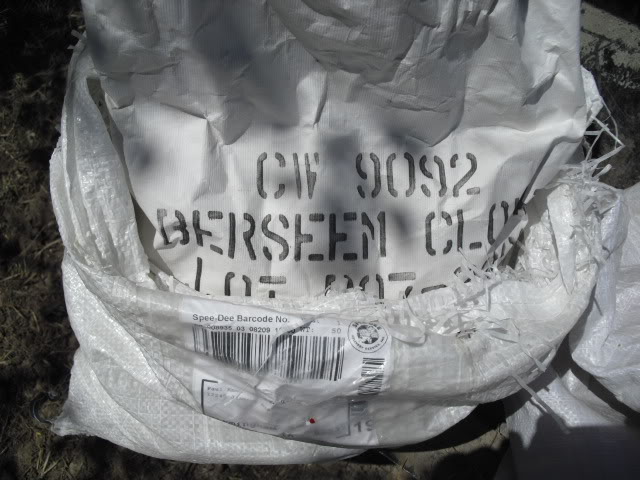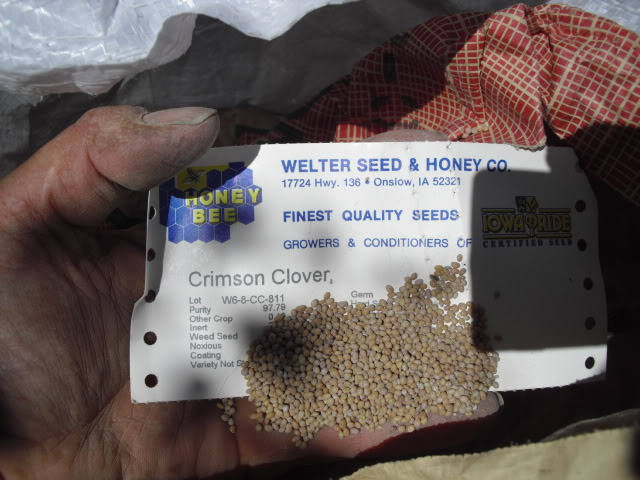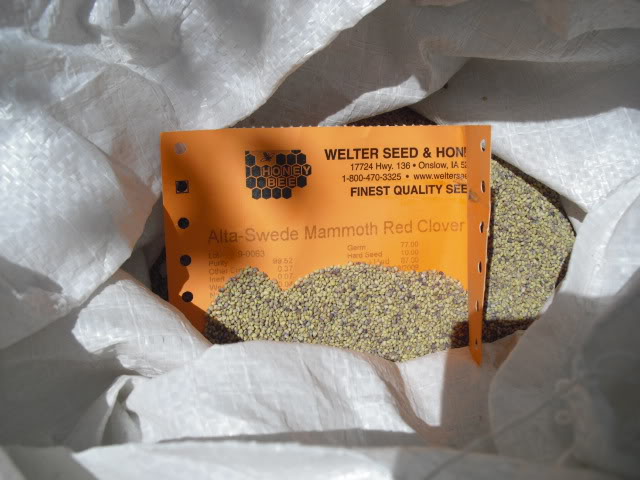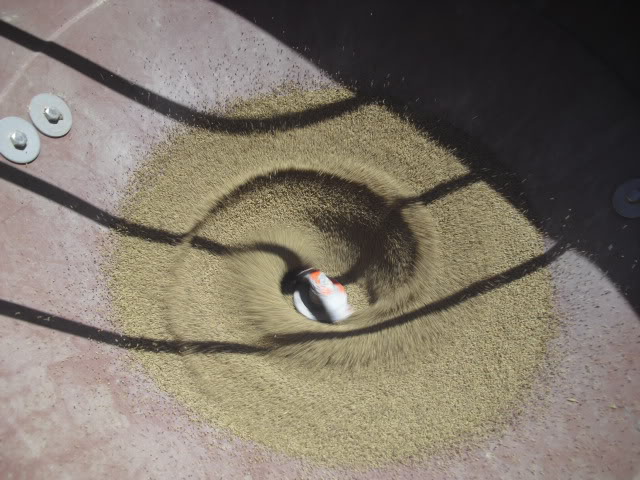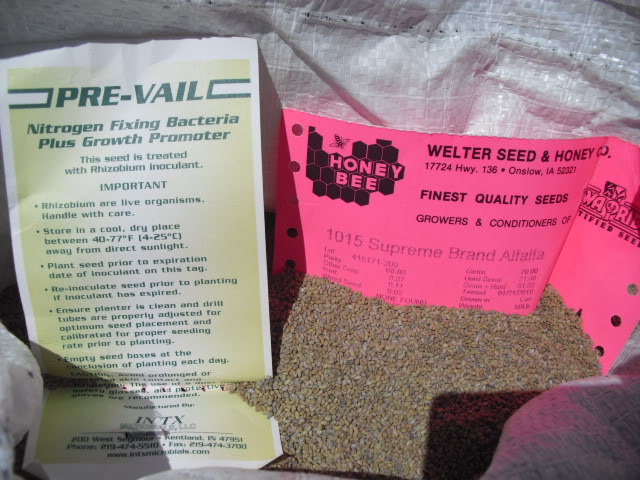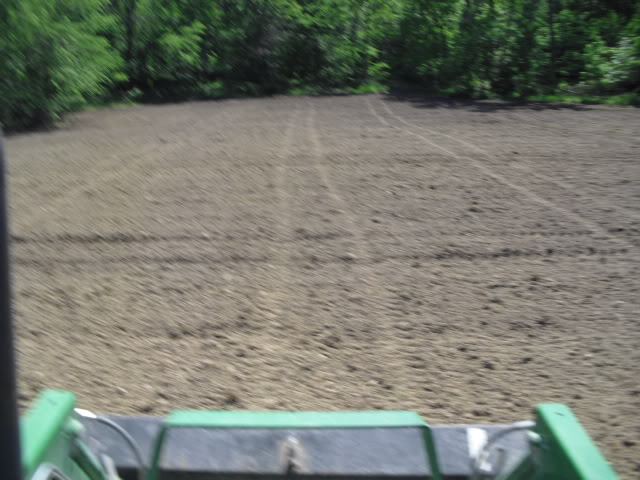There are plenty of ways to establish alfalfa including no-tilling and any can be successful although I have found that preparing a good seedbed first usually works best.
I planted a couple acres of alfalfa for my friend Walt the other day and since it was part of an old pasture (converted to hayfield) with lot's of allelopathic chemicals present I elected to plow it first.
This field is hidden and the farmer that rents it never has time to make improvments so it's just very poor grass hay at best.
Even at that because of a lack of other food sources deer already frequent this field so converting several acres to lush alfalfa and letting the farmer keep it mowed and baled is a no brainer!
I nuked the field with 2 quarts 41% glyphosate, AMS and 1 quart crop oil per acre in early April and put on 400#'s of pel lime at that time.
The field varies from deep loamy black soil to hard red clay that is like trying to plow up a parking lot!
Eventually I finished the job however
We are fast approaching 18"'s of rain since late April here in SE IA, crops flooded out, replanted and perhaps flooded out again. In this hill country water runs off to some extent and what soaks in seeps down hill and in this case into the bottom of the furrows.
I had little choice but to go cross ways of the furrows with the tiller the first time which is a little like riding a mechanical bull a couple up from the low setting!

Once tilled over I spread another 300#'s of pel lime on the upper clay areas and I expect we will need more until we can get ag lime put on.
Followed by 400#'s of 6-24-24 per acre, applied slightly heavier in the poor soil areas and slightly less on the rich black loam.
When you spend you life working with soils and growing "stuff", eventually you come to understand soil husbandry and it become easier to read the productivity of soils...or lack of it and make changes accordingly.
Once the lime and fertilizer was on I tilled them in, in a "kiter corner" fashion to further level the field...if you have every taken hay off from a poorly fitted field, you'll know why it is important to do a good job.
I pulled a small cultipacker behind to prepare to seed by having an already firm soil surface.
Following that I once again hooked up the spreader
and broadcasted 2 bushel of Jerry oats per acre (32#'s per bushel)
I had not used this spreader before so that requires a little "by guess and by gosh" trial and error to deterine settings, especially before spreading expensive alfalfa seed!
I spread the less expensive pel lime first to determine settings for spreading the fertilizer and so used the same idea with the seed. We had left over red clover, berseem and crimson clovers so I mixed those up and spread those first along with a few pounds of alfalfa.
This spreader has a great "mixer" that keeps seed and fertilizer well blended while being spread.
Once I was sure of the setting and it is the very smallest setting in ANY broadcaster by the way, I spread 20#'s per acre of 1015 Supreme Brand Alfalfa seed.
1015 Alfalfa seed
By no means the best alfalfa but a reasonably priced alfalfa that would meet the needs in this situation. The fall dormancy and winter survival ratings were good and it also has high disease and pest resistance.
I spread this seed crossways of the intial pass to insure good coverage across the field because it is difficult to see the tiny seeds and be certain of coverage when broadcasting.
I then pulled the cultipacker alone over the seed to just press it into the top 1/8-1/4" of soil without burying it and...called it a day.
We'll keep an eye on growth progress this summer and usage by whitetails thru the winter.
Costs per acre were roughly as follows not including labor, fuel etc.
$5 per acre herbicide
$80 per acre alfalfa seed
$50 per acre pel lime
$128 per acre 6-24-24
Alfalfa is not for everyone but if you have a situation where a local farmer can mow and bale the hay, you have the opportunity to have you cake and eat it too by recieving cash rent, not having to clip the alfalfa yet having an awesome attractant lasting well into winter....



